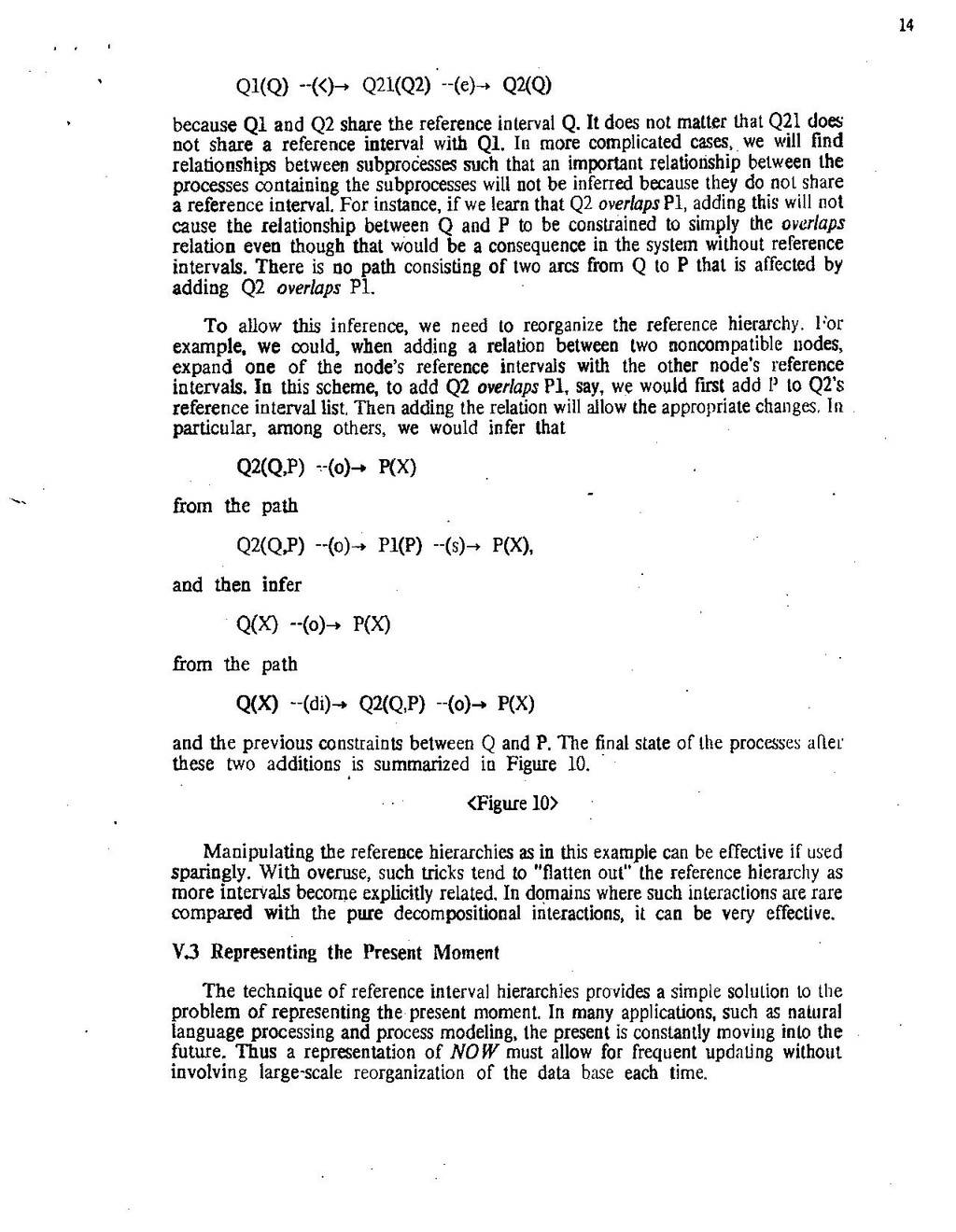QI(Q) --(<)- Q21(02) --(e)+ Q2(Q)
because Q1 and Q2 share the reference interval Q. It does not malter that Q21 does not share a reference interval with Ql. In more complicated cases, we will find relationships between subprocesses such that an important relationship between the processes containing the subprocesses will not be inferred because they do not share a reference interval. For instance, if we learn that Q2 overlaps P1, adding this will not cause the relationship between Q and P to be constrained to simply the overlaps relation even though that would be a consequence in the system without reference intervals. There is no path consisting of two arcs from Q to P that is affected by adding Q2 overlaps pl.
To allow this inference, we need to reorganize the reference hierarchy. For example, we could, when adding a relation between two noncompatible nodes, expand one of the node's reference intervals with the other node's reference intervals. In this scheme, to add Q2 overlaps Pl, say, we would first add P 10 Q2's reference interval list. Then adding the relation will allow the appropriate changes. In particular, among others, we would infer that
Q2(Q.P) --(0)-- P(X)
from the path
Q2(Q,P) --(0)→ P1(P) --(s)+ P(X),
and then infer
Q(X) --(0)→ P(X)
from the path
Q(X) --(di) → Q2(Q,P) --(0)→ P(X)
and the previous constraints between Q and P. The final state of the processes aller these two additions is summarized in Figure 10.
<Figure 10)
Manipulating the reference hierarchies as in this example can be effective if used sparingly. With overuse, such tricks tend to "flatten out" the reference hierarchy as more intervals become explicitly related. In domains where such interactions are rare compared with the pure decompositional interactions, it can be very effective. V.3 Representing the Present Moment
The technique of reference interval hierarchies provides a simple solution to the problem of representing the present moment. In many applications, such as nalural language processing and process modeling, the present is constantly moving into the future. Thus a representation of NOW must allow for frequent updating without involving large-scale reorganization of the data base each time.
